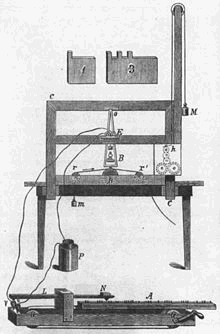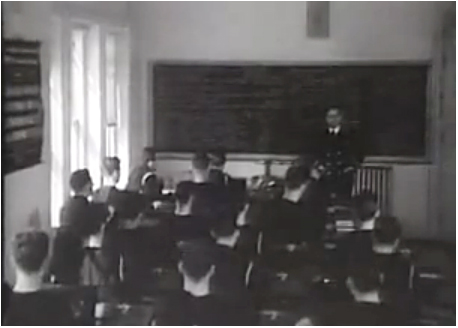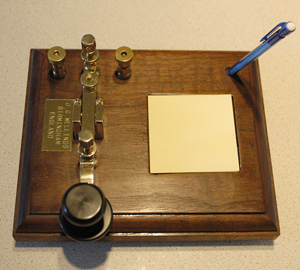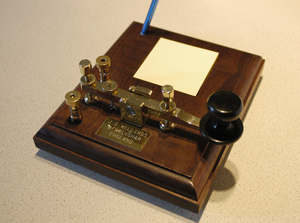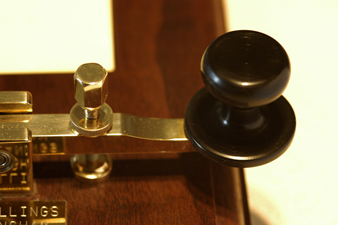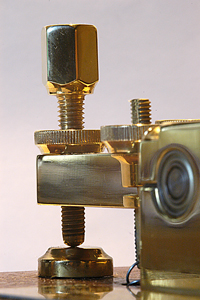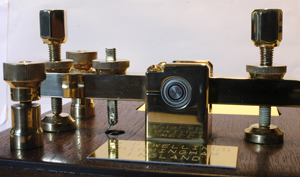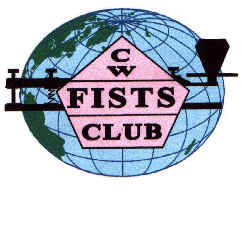Web Updated;
21/06/2012
Mail me!
Sign the guest book
CW & Morse Keys
| I have been interested in Morse Code since
the
inception of my license in 2008. It is one of the simplest and purest form
of radio communication.
Samuel Morse was originally credited with inventing a system of communication that could be transmitted and received using the telegraph machine built in 1836, however earlier successful attempts at a signalling system were recorded in 1746 by the French scientist and abbé Jean-Antoine Nollet On 6 January 1838 Morse first successfully tested the device at the Speedwell Ironworks near Morristown, New Jersey, and on 8 February he publicly demonstrated it to a scientific committee at the Franklin Institute in Philadelphia, Pennsylvania. |
Photo (copyright) courtesy of Wikipedia |
| Morse Code in the Second World War.
Morse code was used in the 1939-1945 World war by all the services, I have found some footage on Youtube of a class of Navy Recruits in 1941. Please click on the photo right to use the link. Copyright "Youtube" video.
|
Click on the photo to start the link. |
| My Straight key used today.
The key itself has been constructed and manufactured by John Wellings M3SIW (Link to John's website is in the Favourites Page) I constructed the base out of walnut which was machined around the perimeter using an "Ovolo" router bit. I also routed a recess to enable a standard "post-it" pad to be installed and of course a hole for a pen. The angle of the pen hole set at the correct slant for operating. The holes were drilled for the various key parts and then the metal work tested in place. Once a good operation was confirmed all the metal work was removed and the the wood stained and polished with three coats of lacquer. Wiring and metal key parts re-positioned and key photographed as shown. This is a really good solid key and the following photographs show the precision of manufacturing from Johns workshop. |
|
| Morse code is fun to learn but
takes time, practice and patience! The results are incredible rewarding
and the mode of operation is extremely efficient, often only requiring a
few watts to travel great distances. If you have never tried Morse Code
google some of the PC training software. The one I use is Ray
Goff's (G4FON) Koch CW trainer Version 9 which is very good.
I am now a member of "FISTS" CW
Club. Good luck with "the code" and hope to work you on air soon. 73 |
|


